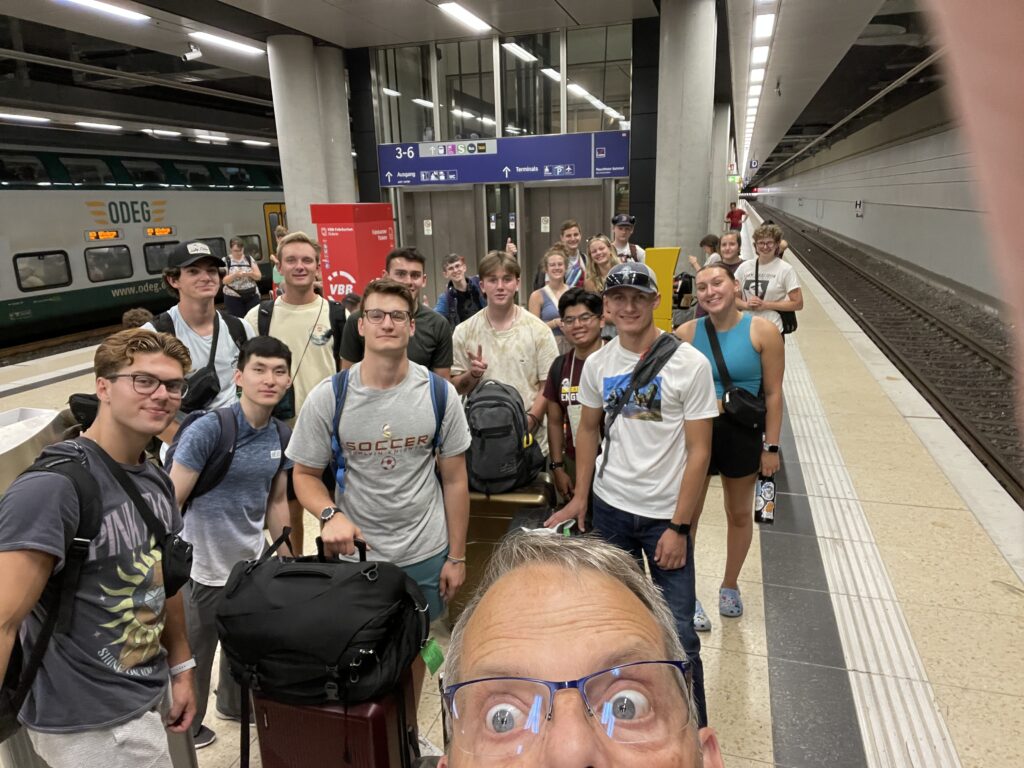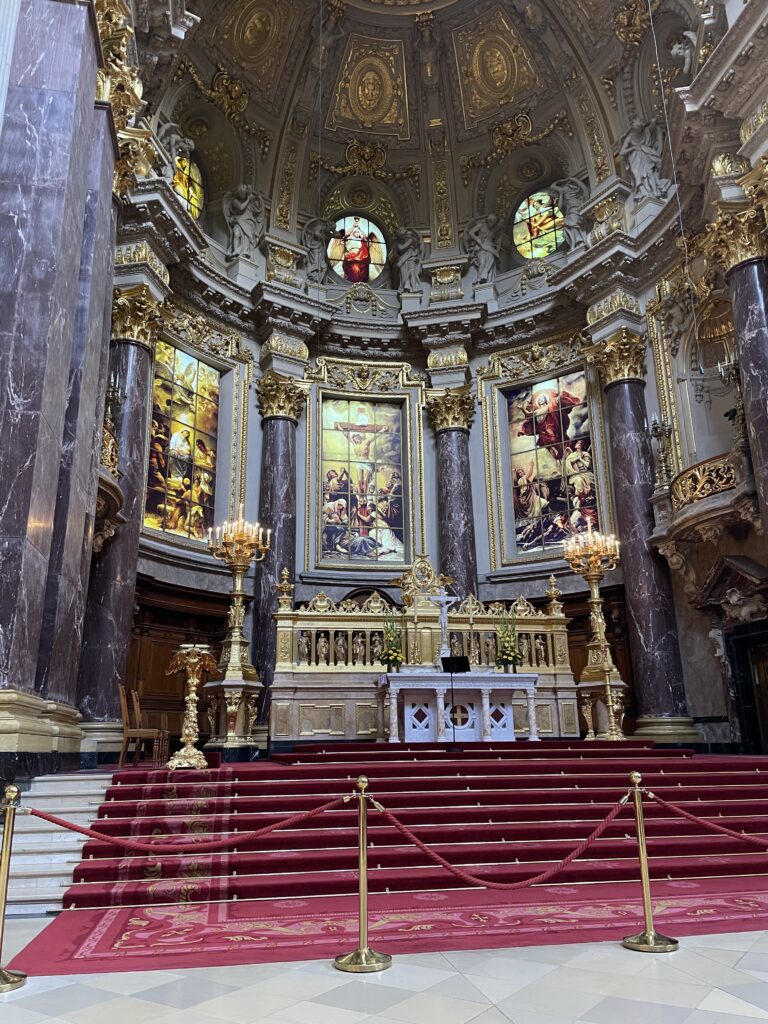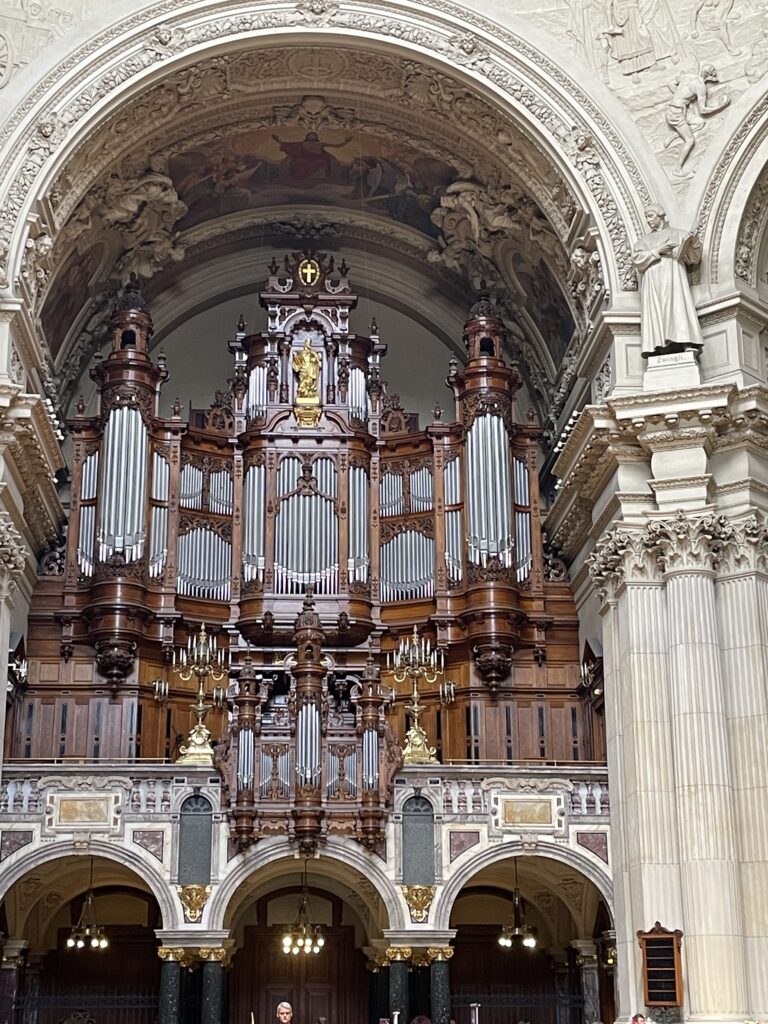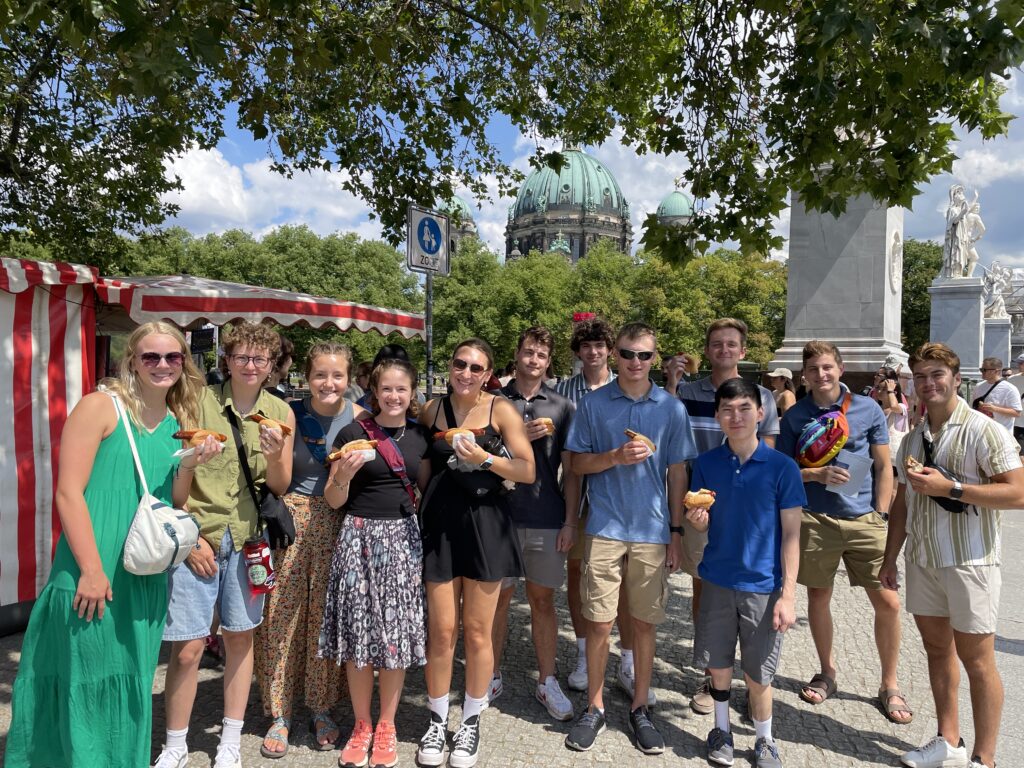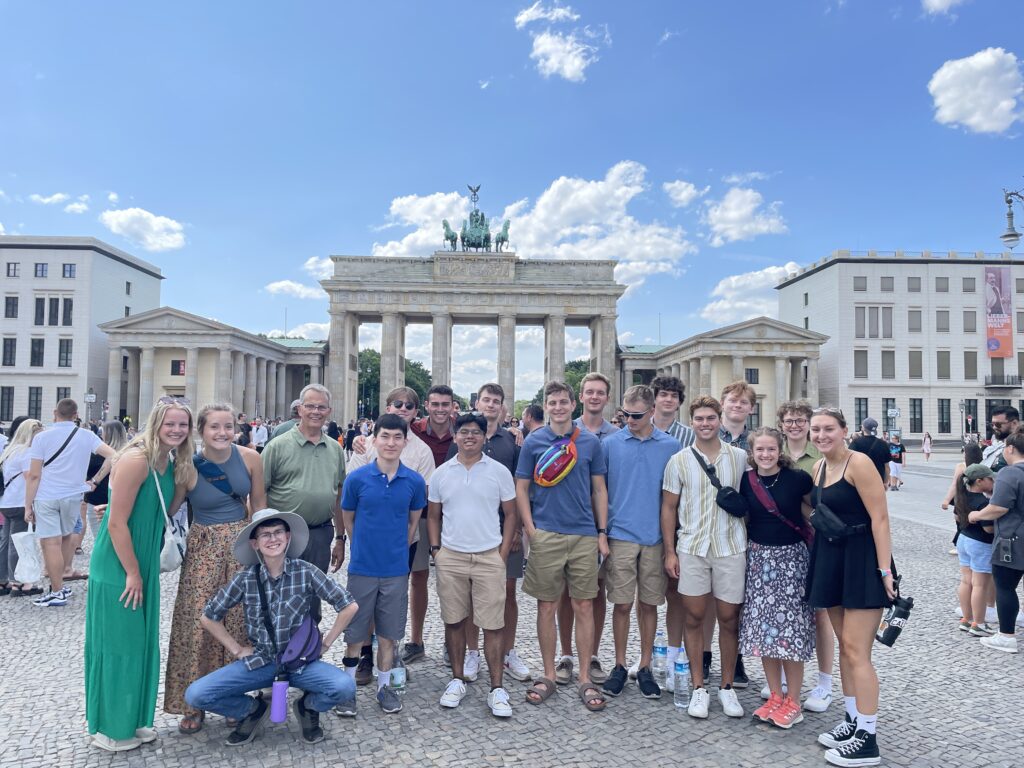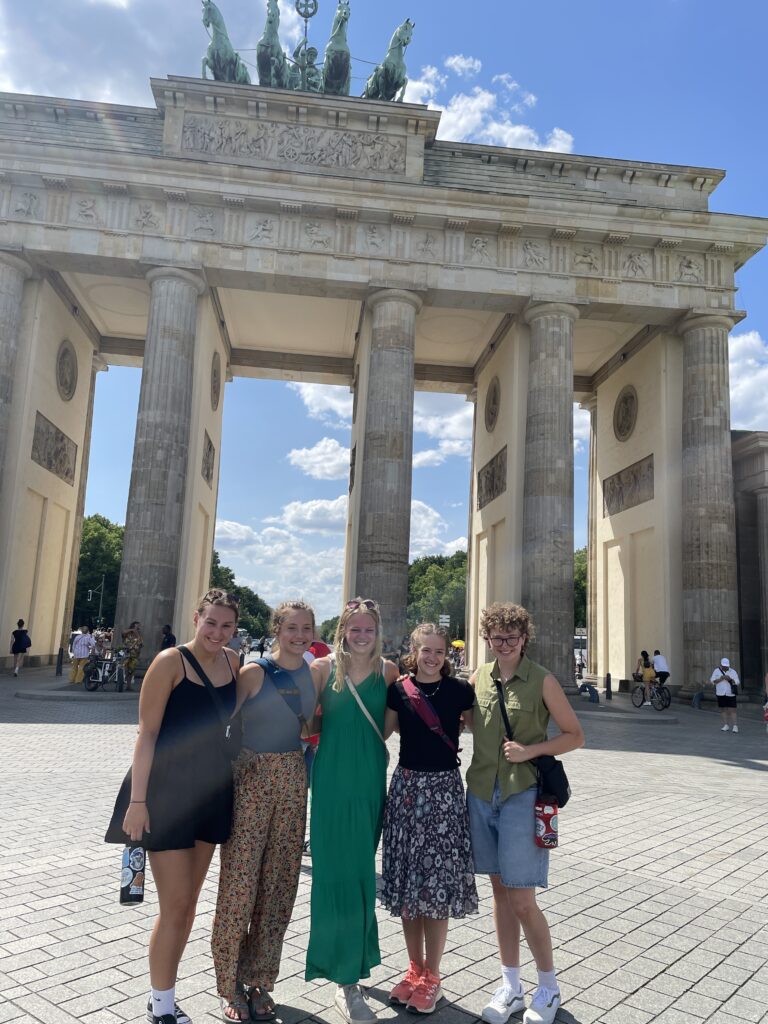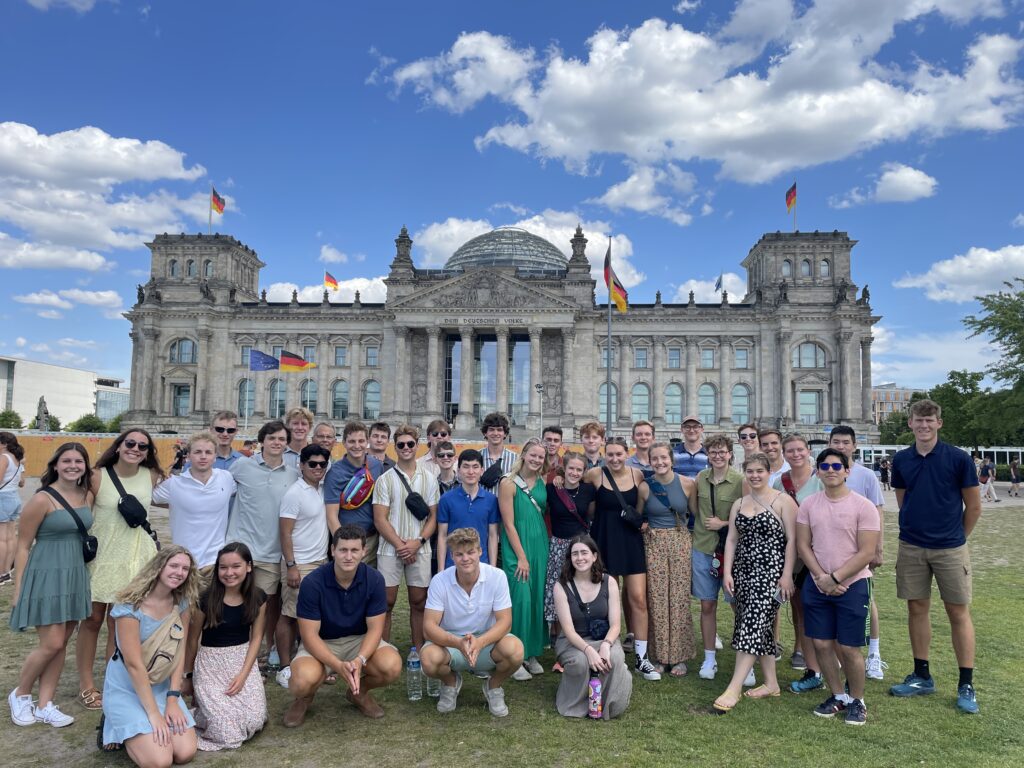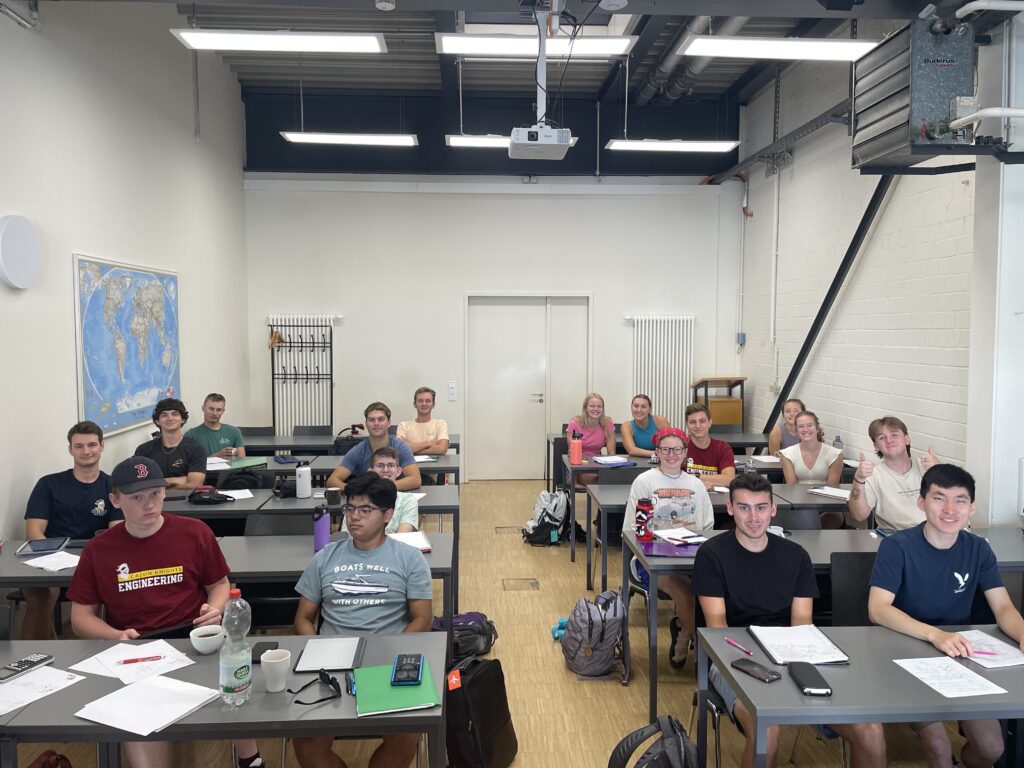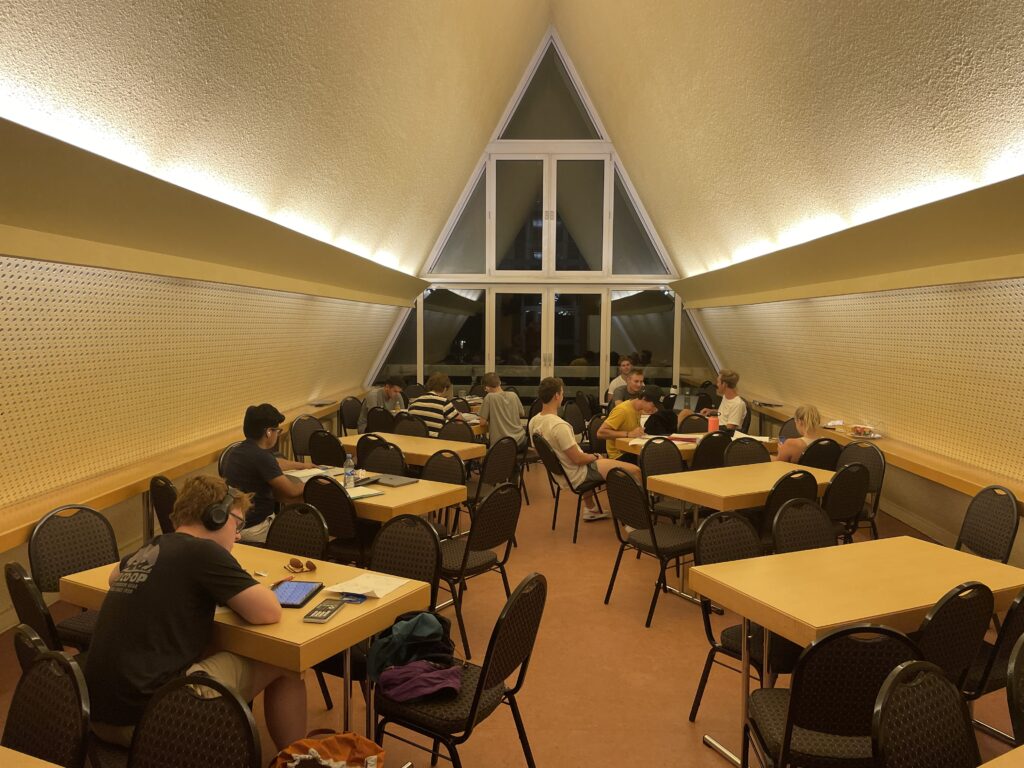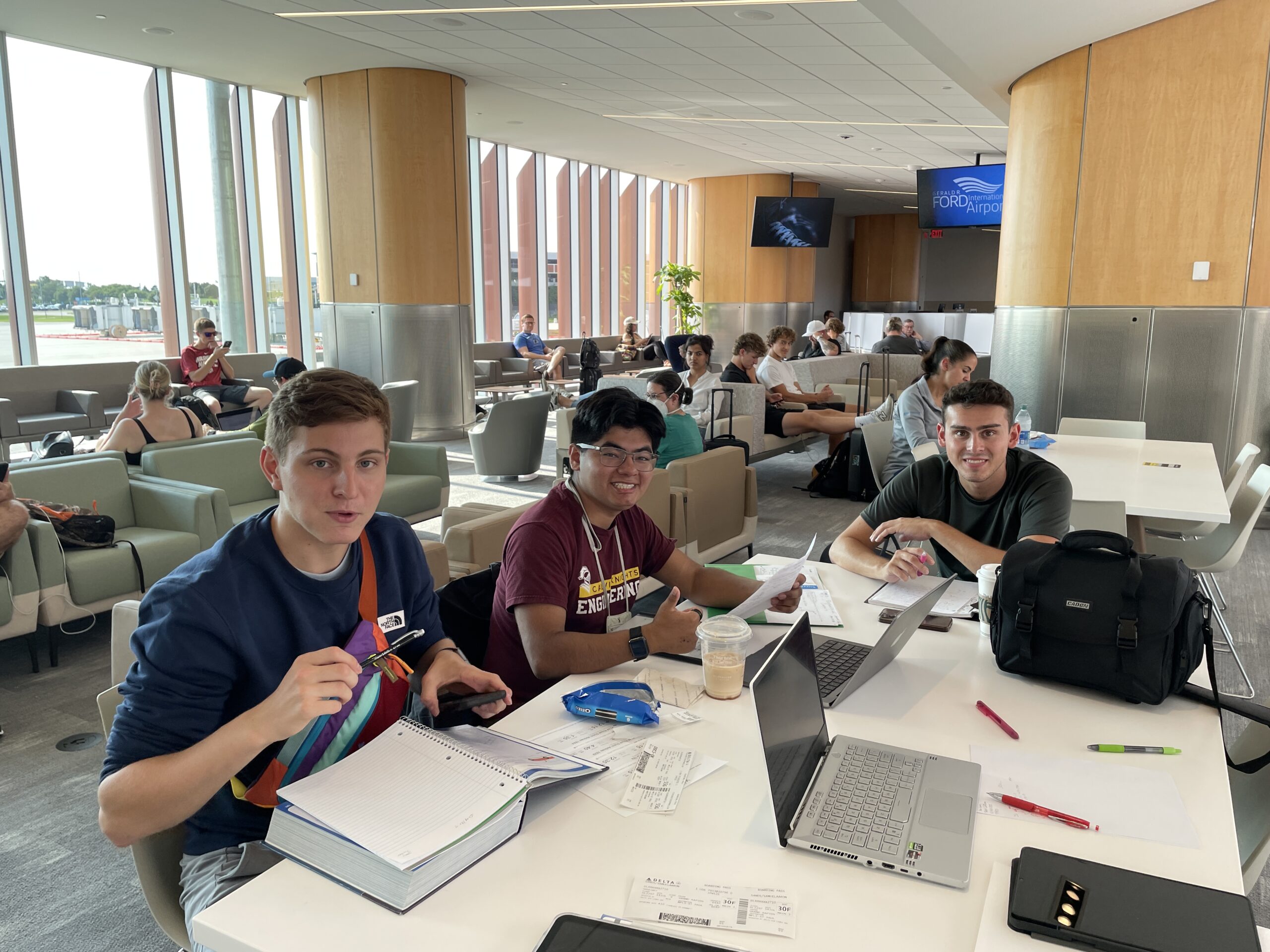The students took the test #2 which marks the end of the first half of the engineering course.
Prof Mark Michmerhuizen is arriving in Berlin today and tomorrow morning we all leave at 5:45 in the morning to start our weekend journey to Heidelberg/Koblenz/Köln. Prof Leonard De Rooy is headed back to Michigan on Tuesday.
Here is a general itinery:
| Summer Program in Germany, Summer 2023 | |
| Sunday, July 9, 2023 | Arrive on Calvin Campus(on campus housing open) |
| Monday, July 10, 2023 | Class on campus 12:30-4:30 (first class in afternoon) |
| Tuesday, July 11, 2023 | Class on campus 8:30-12:30 |
| Wednesday, July 12, 2023 | |
| Thursday, July 13, 2023 | |
| Friday, July 14, 2023 | Leave for Germany. Bus leaves Hope’s Campus (time needs to be confirmed). |
| Saturday, July 15, 2023 | Arrive in Berlin at Check into housing Group activities for the day Group Dinner |
| Sunday, July 16, 2023 | Group Church, activites for the day. |
| Monday, July 17, 2023 | Engr202 Class in morning, German class in afternoon |
| Tuesday, July 18, 2023 | |
| Wednesday, July 19, 2023 | |
| Thursday, July 20, 2023 | |
| Friday, July 21, 2023 | Group Visit to Sachsenhausen Group Dinner |
| Saturday, July 22, 2023 | Group Visit to the Deutsches Technikmuseum of Berlin(am) visit to East Side Gallery (pm) |
| Sunday, July 23, 2023 | Group Worship in Berliner Dom |
| Monday, July 24, 2023 | Engr202 Class in morning, German class in afternoon |
| Tuesday, July 25, 2023 | |
| Wednesday, July 26, 2023 | |
| Thursday, July 27, 2023 | |
| Friday, July 28, 2023 | Weekend trip: Travel to Heidelberg, Koblenz and Köln |
| Saturday, July 29, 2023 | |
| Sunday, July 30, 2023 | |
| Monday, July 31, 2023 | Engr202 Class in morning, German class in afternoon |
| Tuesday, August 1, 2023 | |
| Wednesday, August 2, 2023 | |
| Thursday, August 3, 2023 | |
| Friday, August 4, 2023 | Group visit to Bremen |
| Saturday, August 5, 2023 | |
| Sunday, August 6, 2023 | Group worship in Wittenberg, visit Luther house |
| Monday, August 7, 2023 | Engr202 Class in morning, German class in afternoon |
| Tuesday, August 8, 2023 | |
| Wednesday, August 9, 2023 | |
| Thursday, August 10, 2023 | |
| Friday, August 11, 2023 | Group travel to Lübeck |
| Saturday, August 12, 2023 | |
| Sunday, August 13, 2023 | |
| Monday, August 14, 2023 | Engr202 Class in morning |
| Tuesday, August 15, 2023 | |
| Wednesday, August 16, 2023 | |
| Thursday, August 17, 2023 | |
| Friday, August 18, 2023 | |
| Saturday, August 19, 2023 | |
| Sunday, August 20, 2023 | |
| Monday, August 21, 2023 | Open time (assuming class is completed on schedule) |
| Tuesday, August 22, 2023 | |
| Wednesday, August 23, 2023 | |
| Thursday, August 24, 2023 | |
| Friday, August 25, 2023 | |
| Saturday, August 26, 2023 | Group travel back to USA. Leave Berlin at |
| Sunday, August 27, 2023 | |
| Monday, August 28, 2023 | Fall classes begin at Calvin |
